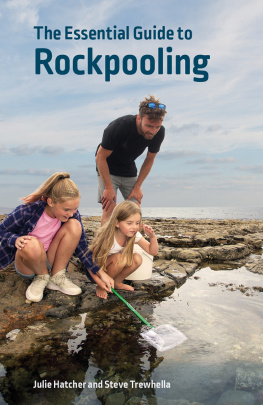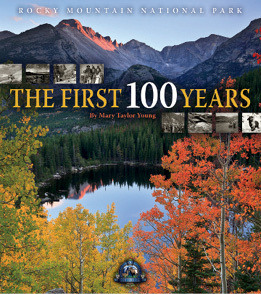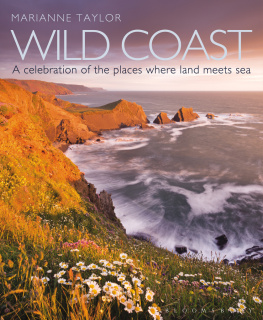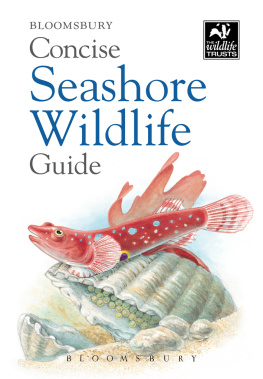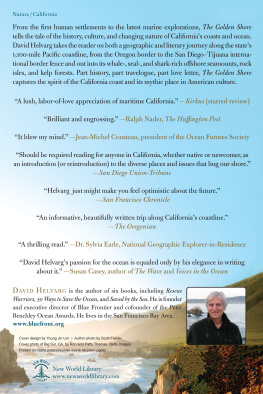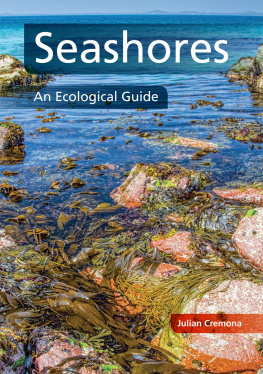Published in 2019 by
Wild Nature Press Ltd
Registered address
7 Sandy Court,
Ashleigh Way,
Plymouth
PL7 5JX
Copyright 2019 text Julie Hatcher and Steve Trewhella
Copyright 2019 photographs Steve Trewhella, except those credited on
The rights of Julie Hatcher and Steve Trewhella to be identified as the authors of this work has
been asserted by them in accordance with the Copyright, Designs and Patents Act 1988.
All rights reserved. No parts of this publication may be reproduced, stored in a retrieval system
or transmitted, in any form or by any means, electronic, mechanical, photocopying, recording
or otherwise, without the prior permission of the publishers.
A CIP catalogue record for this book is available from the British Library.
ISBN 978-0-9955673-1-3
Printed and bound in Slovenia on behalf of Latitude Press
10 9 8 7 6 5 4 3 2 1
www.wildnaturepress.com
By the same authors
THE ESSENTIAL GUIDE TO BEACHCOMBING AND THE STRANDLINE
IN THE COMPANY OF SEAHORSES

Introduction 7 Introduction
F
or most people, the marine environment is almost entirely inaccessible and
impossible to explore. It is an unfamiliar place but a source of endless fascination.
The rockpools and shore, where the land ends and the sea begins, offer us a
glimpse into this mysterious world. It is no wonder that rockpooling is a popular activity,
which we enjoy as children but do not outgrow as adults.
In this book we introduce the reader to the extraordinary diversity of wildlife that can
be found in rockpools and on rocky shores around the coast at low tide. Many people
will be familiar with the crabs and small fish found on trips to the seaside. Our aim is to
enhance this knowledge and create a better understanding of these animals and the
myriad others that can be found using a bit of simple detective work. We have included
a selection of activities that will add a new dimension to this popular pastime.
What are rockpools?
Rockpools are pools of seawater left behind when the tide retreats. The natural process
of coastal erosion results in the formation of hollows, gullies and crevices which trap
water and form microhabitats supporting a fascinating and diverse array of marine life.
Rockpools are dependent on the local geology and vary from soft, easily eroded chalk
pools to hard, granite exposures.
What is found there?
Rockpools are formed in areas of intertidal bedrock and the activity of rockpooling
necessarily includes the surrounding rocky seashore. This book encompasses the whole
experience of the rocky shore and explains why some creatures are found within the
rockpools while others survive on the surrounding rock. It is sometimes assumed that
the animals found in rockpools have been temporarily trapped, caught out by the
ebbing tide. While this may be the case for some species, for the majority, the rockpool
is their permanent home. Many are permanently attached, for example seaweed and
barnacles, and moving is not an option.
When is the best time for rockpooling?
Rockpools only appear as the tide recedes, so you will need to have a knowledge of tide
times. These vary around the coast and from day to day. As there is no point turning up
at the beach when the tide is in, a certain amount of planning is required. Tide times for
a particular area can be found either by buying a tide table, available from chandlers and
tackle shops, or by looking online.
Plan to visit as the tide is going out so you will have more time to explore, following
the tide down the shore. It is important to ensure you will not be cut off by the incoming
tide. Remember that the incoming tide will flood low-lying gullies and channels before
it reaches higher ground, so plan your retreat carefully. As the tide varies each day
throughout the lunar cycle you should be aware of the difference between spring and
neap tides. The lowest part of the shore, home to the widest variety of marine life, is only
uncovered during spring tides.

new moon first-quarter moon
neap tides
full moon last-quarter moon
sun
moon
earth
neap tidal range
spring tidal range
high spring tide
high neap tide
low neap tide
mean tidal level
low spring tide
spring tides
LUNAR CYCLE
last-quarter moon
1day 2 3 5 6 74 8 9 11 13 14 1512 16 17 18 20 21 2219 23 24 25 27 2826
8 Introduction 8 Introduction
Tides
Tides are governed by the moon and sun and their relative position to the Earth. At
times of new and full moon, when the Earth, sun and moon are all in alignment and their
gravitational pull on the ocean is combined, the tidal range is larger, which means the
low tide is lower and the high tide reaches higher up the shore. These are called spring
tides. At times of half-moon, the moon and sun form right angles with the Earth so that
the gravity of the moon and sun are pulling in opposing directions. The result is a smaller
tidal range with a not-so-low low tide and not-so-high high tide on the shore. These are
neap tides.
The returning tide brings relief to creatures of the intertidal zone

